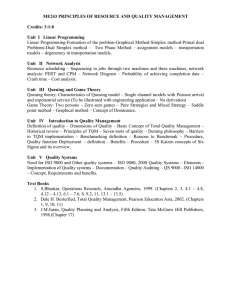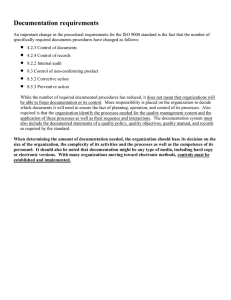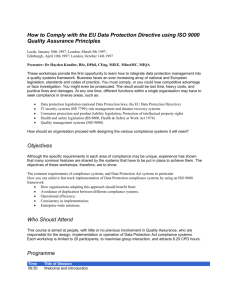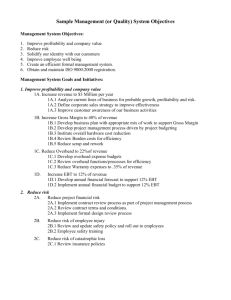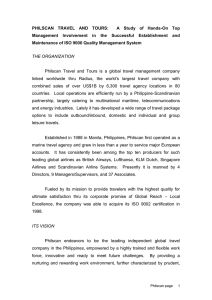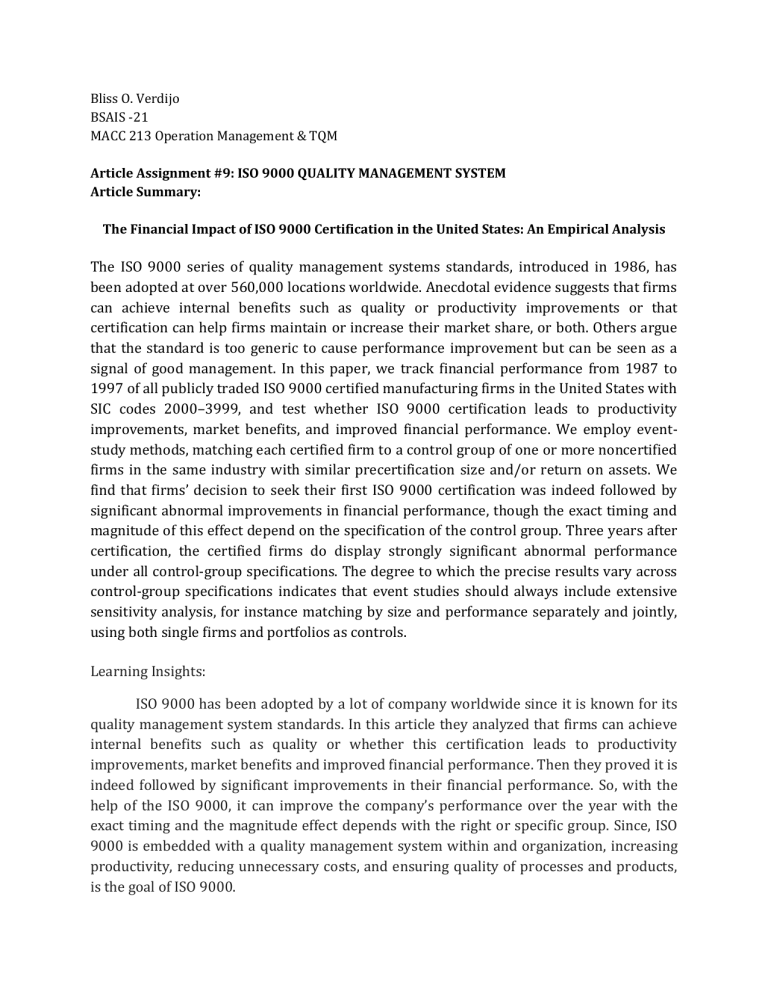
Bliss O. Verdijo BSAIS -21 MACC 213 Operation Management & TQM Article Assignment #9: ISO 9000 QUALITY MANAGEMENT SYSTEM Article Summary: The Financial Impact of ISO 9000 Certification in the United States: An Empirical Analysis The ISO 9000 series of quality management systems standards, introduced in 1986, has been adopted at over 560,000 locations worldwide. Anecdotal evidence suggests that firms can achieve internal benefits such as quality or productivity improvements or that certification can help firms maintain or increase their market share, or both. Others argue that the standard is too generic to cause performance improvement but can be seen as a signal of good management. In this paper, we track financial performance from 1987 to 1997 of all publicly traded ISO 9000 certified manufacturing firms in the United States with SIC codes 2000–3999, and test whether ISO 9000 certification leads to productivity improvements, market benefits, and improved financial performance. We employ eventstudy methods, matching each certified firm to a control group of one or more noncertified firms in the same industry with similar precertification size and/or return on assets. We find that firms’ decision to seek their first ISO 9000 certification was indeed followed by significant abnormal improvements in financial performance, though the exact timing and magnitude of this effect depend on the specification of the control group. Three years after certification, the certified firms do display strongly significant abnormal performance under all control-group specifications. The degree to which the precise results vary across control-group specifications indicates that event studies should always include extensive sensitivity analysis, for instance matching by size and performance separately and jointly, using both single firms and portfolios as controls. Learning Insights: ISO 9000 has been adopted by a lot of company worldwide since it is known for its quality management system standards. In this article they analyzed that firms can achieve internal benefits such as quality or whether this certification leads to productivity improvements, market benefits and improved financial performance. Then they proved it is indeed followed by significant improvements in their financial performance. So, with the help of the ISO 9000, it can improve the company’s performance over the year with the exact timing and the magnitude effect depends with the right or specific group. Since, ISO 9000 is embedded with a quality management system within and organization, increasing productivity, reducing unnecessary costs, and ensuring quality of processes and products, is the goal of ISO 9000. Link: The Financial Impact of ISO 9000 Certification in the United States: An Empirical Analysis | Management Science (informs.org)

